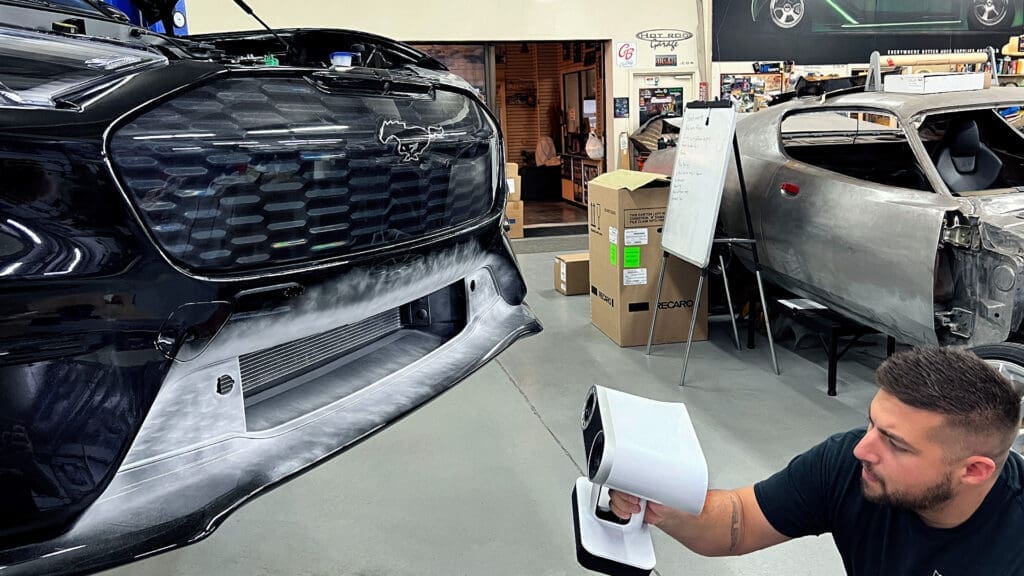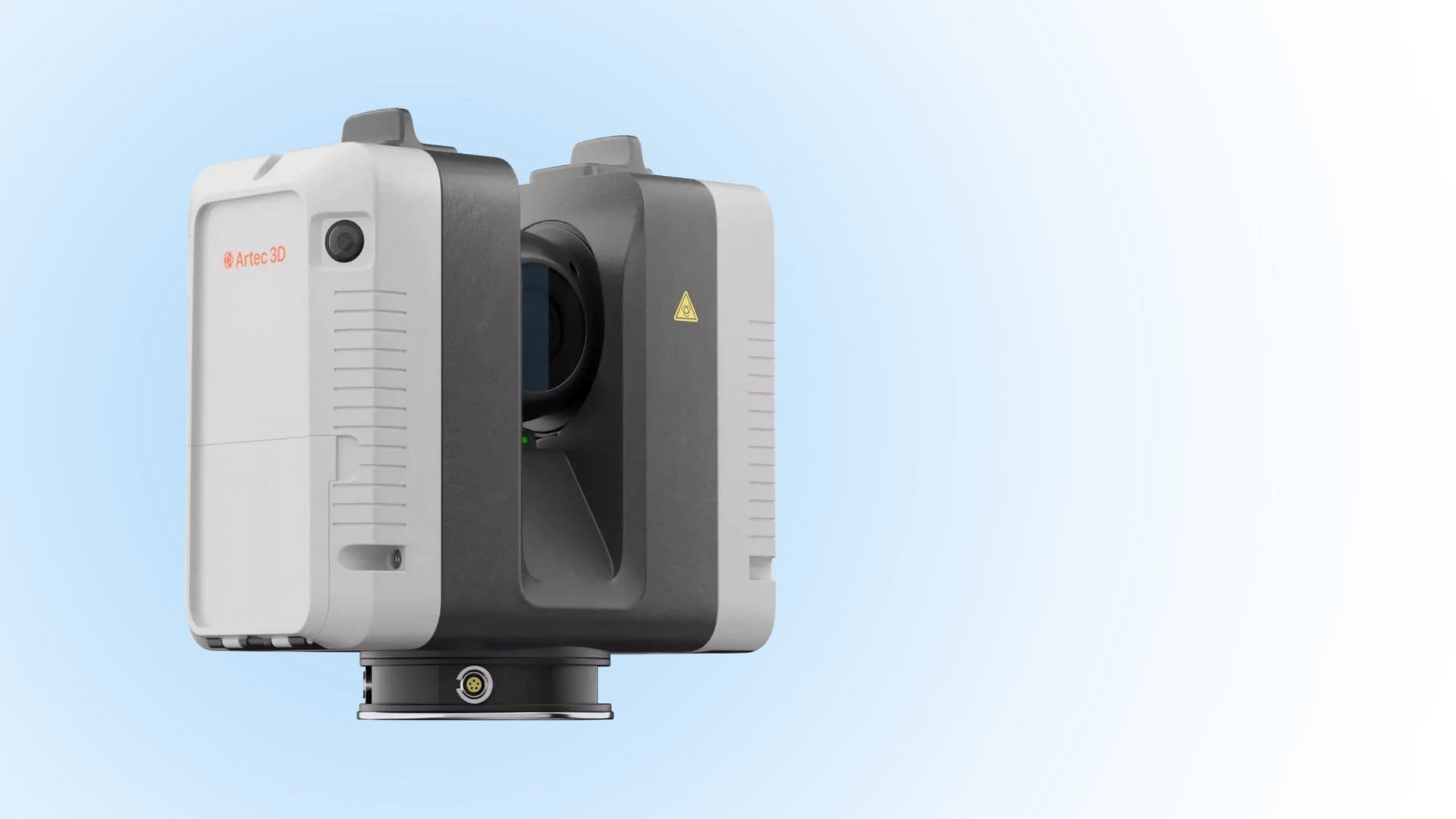
Long-Distance 3D Scanning for Infrastructure
Huge infrastructure projects present unique challenges that can only be addressed with advanced solutions like long-range 3D scanners. Whether it’s
Picture a mechanic working on a classic American hot rod, and you might imagine a Prohibition-era tinkerer up to their elbows in grease. But hot rod culture is still thriving around the country today, with expert engineers now turning to the latest digital technologies to boost vehicle performance.
Today’s “modding” of hot rods is a curious mix of old and new. Many experts in the field work on both contemporary vehicles and older ones—and some even date back to that vintage 1930s period.
But how do these specialist mechanics make replacement parts that haven’t been built by the manufacturer for nearly a century?
That’s the challenge that Tucci Hot Rods, based in Marcy, New York, has been tackling since it opened nearly three decades ago. With the Artec Leo 3D scanner recently added to its set of tools, the garage is now better equipped than ever to help customers revitalize their beloved dragsters.
Founded by Dave Tucci Jr. and his wife Jill in 1997, Tucci Hot Rods has carved out a reputation as one of the most reliable and creative mod shops in the country. And it’s still a family business, with the couple’s son Dominick Tucci now working as an Industrial Designer.
Its projects can vary massively between customers, depending on the age of the vehicle and the degree of modding required. But whatever the demand, Tucci Hot Rods tries to walk its customers through every step of the process, right from the initial designs to the first drive of the finished vehicle.
The modding process at Tucci has changed a lot over recent years. Initially, the team would replicate a complex metal part by making a pattern of each side, taking measurements, and then “connecting the dots” to make something that was close to fitting exactly but would require lots of back and forth.
According to Dominick Tucci, that process had its limitations, both in terms of speed and accuracy. “If I made a really nice template, it could take me two hours,” he explains. “At that point, it may not even be perfect either.”

To try and streamline that measurement process, Dominick picked up a simple Xbox Kinect camera and low-cost scanning software a few years back. That equipment helped him get acquainted with the basics of 3D scanning, but it wasn’t up to a professional standard.
Things began to change when Dominick reached out to Digitize Designs after seeing some Artec 3D scanners at a trade show in 2021. After a conversation with our team, Dominic realized that a wireless, all-in-one device was exactly what he needed to start digitizing car parts at the shop. The solution was the fully standalone Artec Leo.
“Our collaboration with Tucci Hot Rods, a connection made through a satisfied customer, has enabled us to deliver superior 3D scanning expertise,” explains Digitize Designs’ Kyle Burdine. “After an assessment, we recommended Artec 3D as the ideal fit for Dom’s operations.”
The Artec scanner was an instant hit at the garage, helping Dominick and his team quickly capture car parts at rapid speed. As the only fully standalone scanner on the market—featuring an NVIDIA Jetson TX2 processor and 5” HD built-in display—the device offers real-time feedback for smooth and fast scanning.
“I’ve used scanners before where it’s connected to a computer, and you’re constantly looking at what you’re getting, and making sure you’re getting it,” Dominick says. “With Artec Leo, you’re looking directly at it the whole time. Plus, the fact that it’s so portable has already come in really handy a bunch of times.”

Adding the Artec Leo to its toolbox has had significant results for Tucci Hot Rods. Previously, templating would have taken around two hours, followed by up to 20 hours of 3D printing to make a prototype that could be tested for fit.
The new 3D scanner, boasting a 0.1 mm point accuracy and data capture speed of up to 35 million points per second, means Dominick and his colleagues can now model a part in minutes. What’s more, the accuracy of that 3D capture means the part is guaranteed to fit, cutting out some of the time-consuming prototyping.
Tucci Hot Rods has adapted to its new workflow with the same lightning-fast speed as of one of its hot rods. One of its very first projects with the scanner, custom tail lights for a classic Dodge, reaped significant cost and time savings.
“Initially, we spent three to four days going back and forth, templating, printing a test piece, changing it, printing another,” says Dominick. “Prints were a minimum of eight to nine hours, and these were made of cheap material as well—not the stuff I used for end parts. In the end, we replaced [that process] with just 15 minutes of scanning.”
Knowing how to manipulate those ultra-fast scans has been equally important for Dominick and his team. With training from our professional engineers at Digitize Designs, he has built up his knowledge of Artec Studio, in particular its mesh simplification feature to ensure that scans are detailed enough for part reproduction but not too large to be moved into his CAD software of choice.
“In Artec Studio, I started to mess around with the tools for reducing the number of polygons in a mesh,” Dominick says. “Every time I tried to do so in Rhino, it’d crash; I realized that I’d rather do that in Artec Studio and bring it into Rhino later. [Artec Studio] works really well for what we do with it.”
In just a short period of time, Tucci Hot Rods has used its Artec Leo standalone 3D scanner for a large number of projects. These have included scanning the grill of a 1936 Dodge truck in order to 3D print new headlight covers, capturing a 1970 Mustang muscle car for various mods, and also customizing a 1931 Ford Model A sedan.
“To customize the Model A, we would previously have mounted its motor on frame rails and cardboard patterned everything,” Dominick explains. “With 3D scanning, I was able to capture the motor and frame in place, draw all the motor mounts, laser cut them out, and then everything just fit right off the bat.”
In fact, the Artec Leo has been so efficient, Tucci Hot Rods is even using it to carry out non-automotive jobs. A client recently asked the team to scan some concrete holes at their silicon wafer chip plant in order to make a custom set of plates to prevent spillages.
For Dominick and the rest of the team, carrying out that sort of extracurricular work is no problem. Whether its a 1930s hot rod or part of a building, Tucci Hot Rods is ready to use its new Artec Leo in whatever way will benefit its customers.
Think you could accelerate your own business with a top-of-the-line 3D scanner like the Artec Leo? Contact Digitize Designs today to set up a demo.
3D Scanning & Metrology News, Press, Insights, Trends, Case Studies, and more.

Huge infrastructure projects present unique challenges that can only be addressed with advanced solutions like long-range 3D scanners. Whether it’s

Different long-range scanner brands offer varying features and capabilities; hence the need to understand the most crucial aspects of long-range

The key difference between long-range and short-range scanners is the maximum distance at which they can capture data. Ordinarily, long-range

The key elements to consider in long-range 3D scanners include accuracy, scan speed, resolution, scanning mechanism, and ease of use.
Secure SSL Encrypted Connection
Two-factor Authentication
© Copyright 2024 – Digitize Designs, LLC – Privacy Policy – Website by Luminos Agency